The issue of how many hunter-gatherers it takes to form a population that can sustain itself over a long period of time is relevant to understanding several issues, including: (1) how hunter-gatherer societies colonized empty landscapes; (2) how/why hunter-gatherer societies take on the forms that they do in different environments; (3) how/why/when those societies change in response to factors such as population growth.
The classic papers on the lower size limits of hunter-gatherer populations were published by Martin Wobst in the 1970's. Like him, I employ model-based approach to address the issue of how big a human population has to be to not be threatened by random fluctuations in mortality, fertility, and the ratio of males to females. Very small populations are more sensitive to those random fluctuations because each person makes up a greater percentage of the population.
My analysis suggested that, under a range of conditions represented in the model, human populations with more than about 150 people were fairly safe over long periods of time. That's a smaller lower size limit, I think, than a lot of people conceive of.
Here is the abstract:
"A non-spatial agent-based model is used to explore how marriage behaviors and fertility affect the minimum population size required for hunter-gatherer systems to be demographically viable. The model incorporates representations of person- and household-level constraints and behaviors affecting marriage, reproduction, and mortality. Results suggest that, under a variety of circumstances, a stable population size of about 150 persons is demographically viable in the sense that it is largely immune from extinction through normal stochastic perturbations in mortality, fertility, and sex ratio. Less restrictive marriage rules enhance the viability of small populations by making it possible to capitalize on a greater proportion of the finite female reproductive span and compensate for random fluctuations in the balance of males and females."
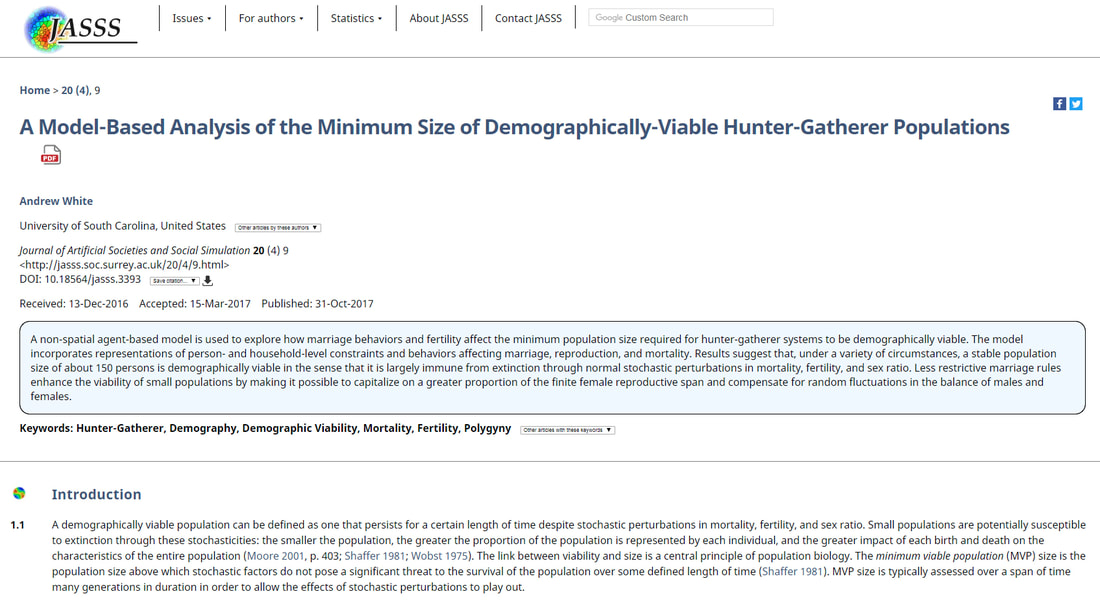
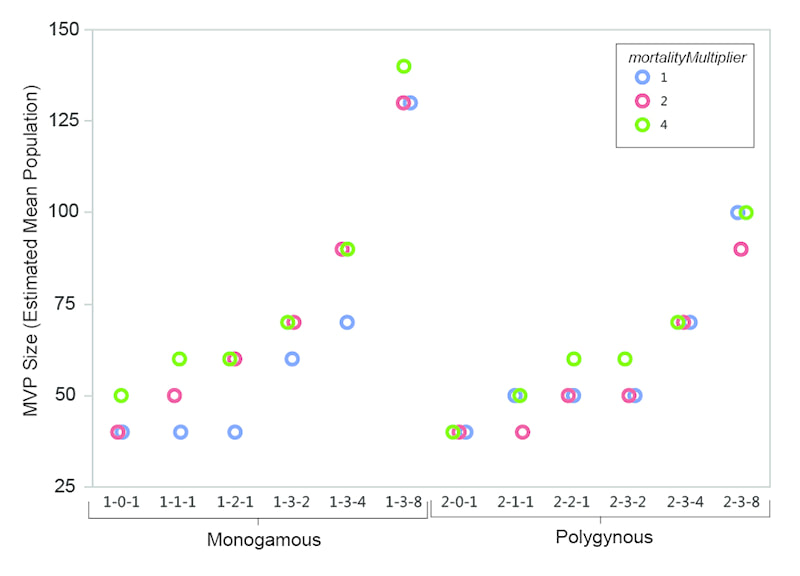
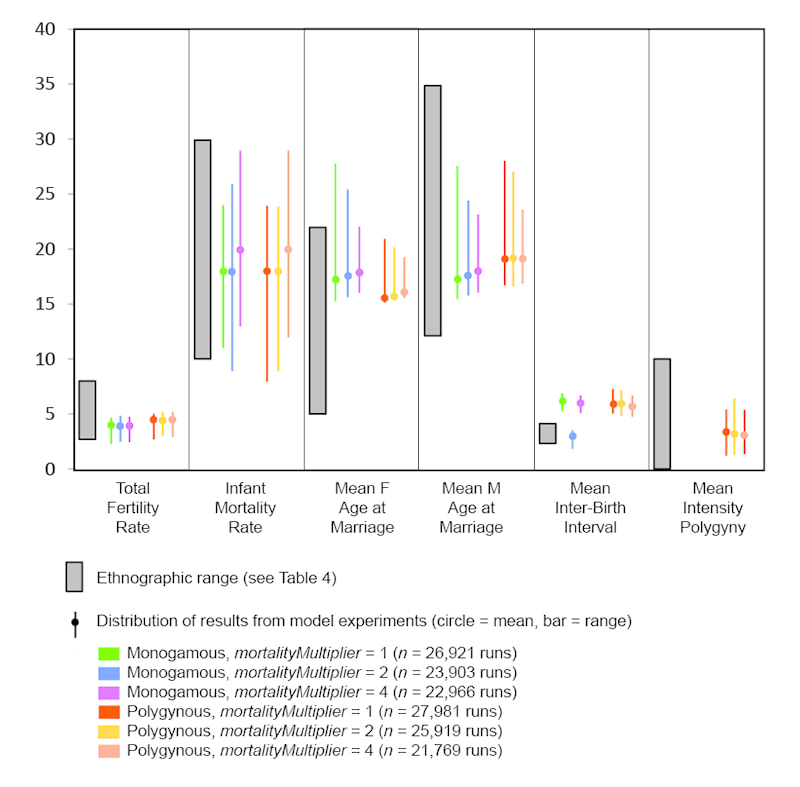
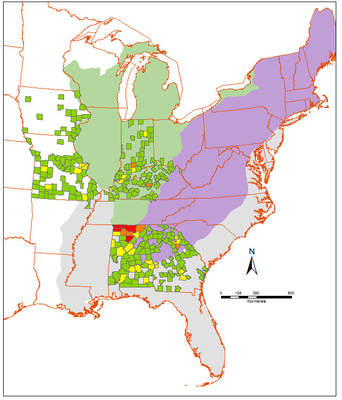
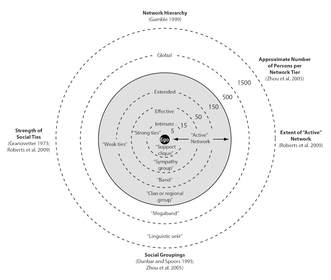
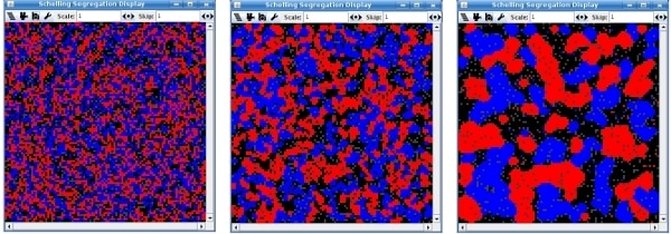
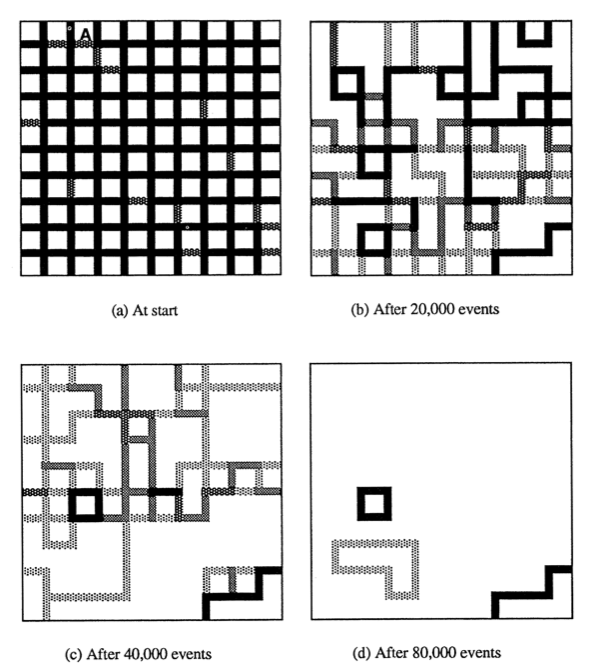
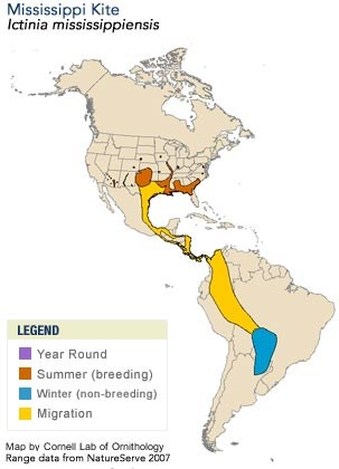
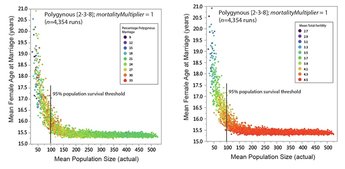

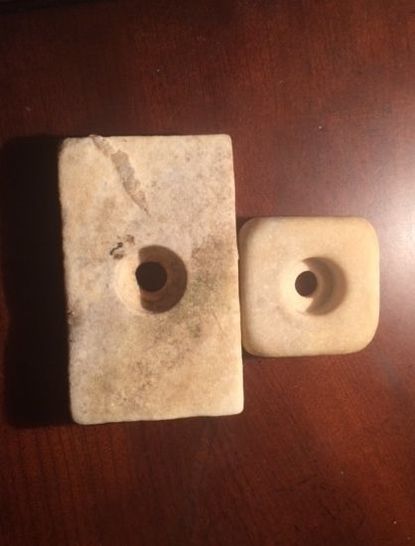
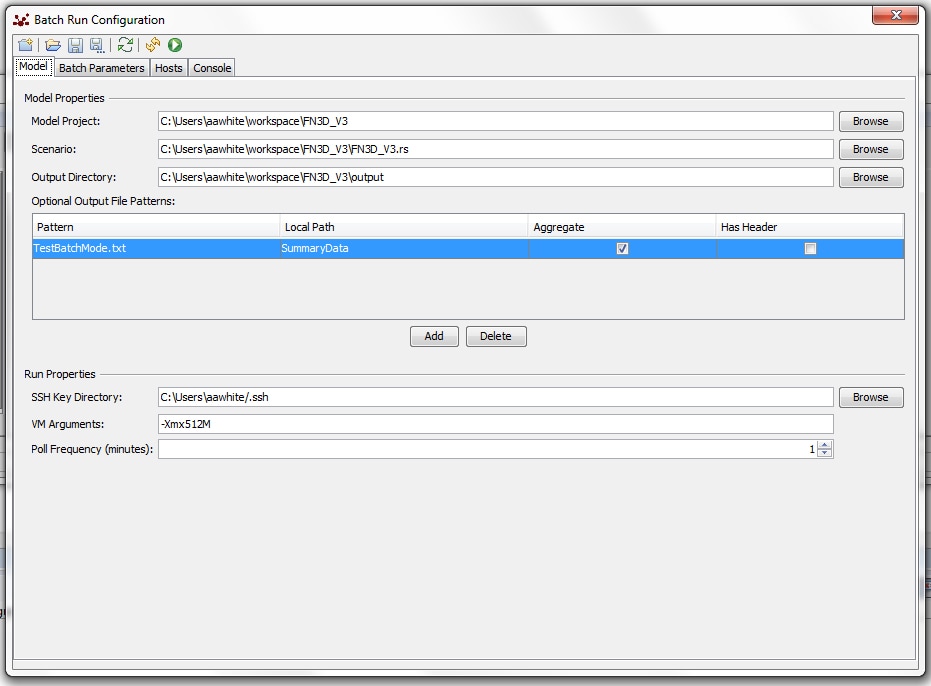
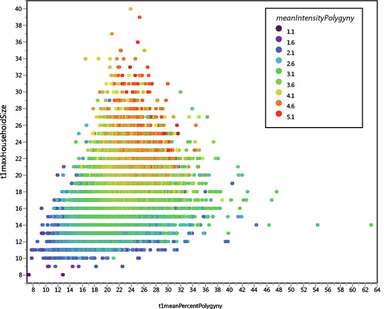
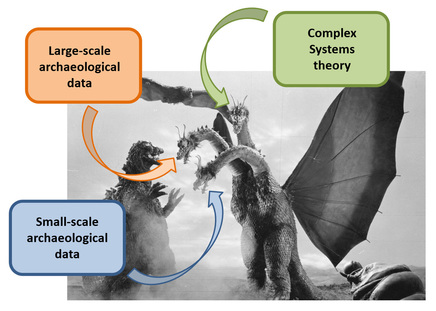

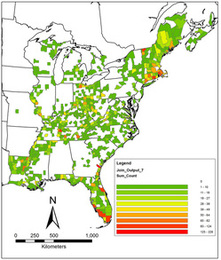
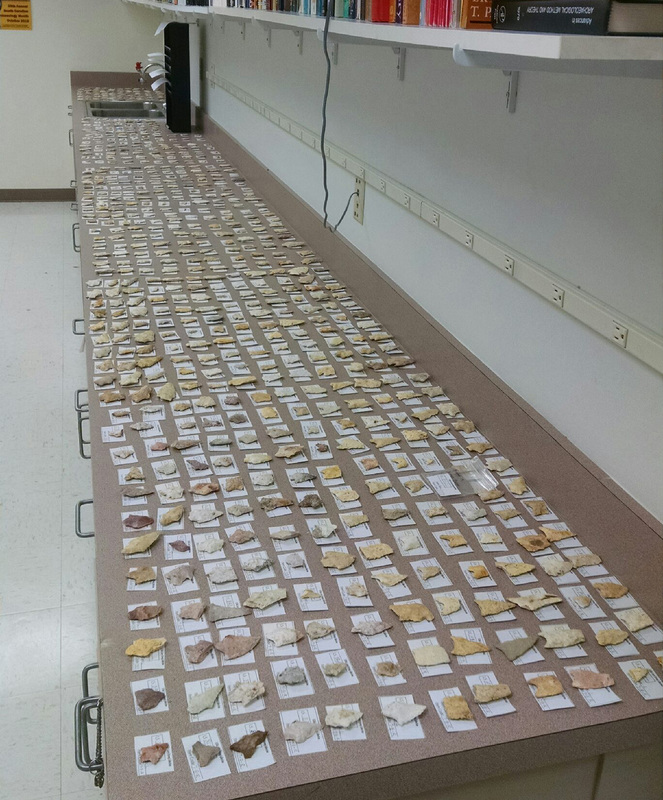

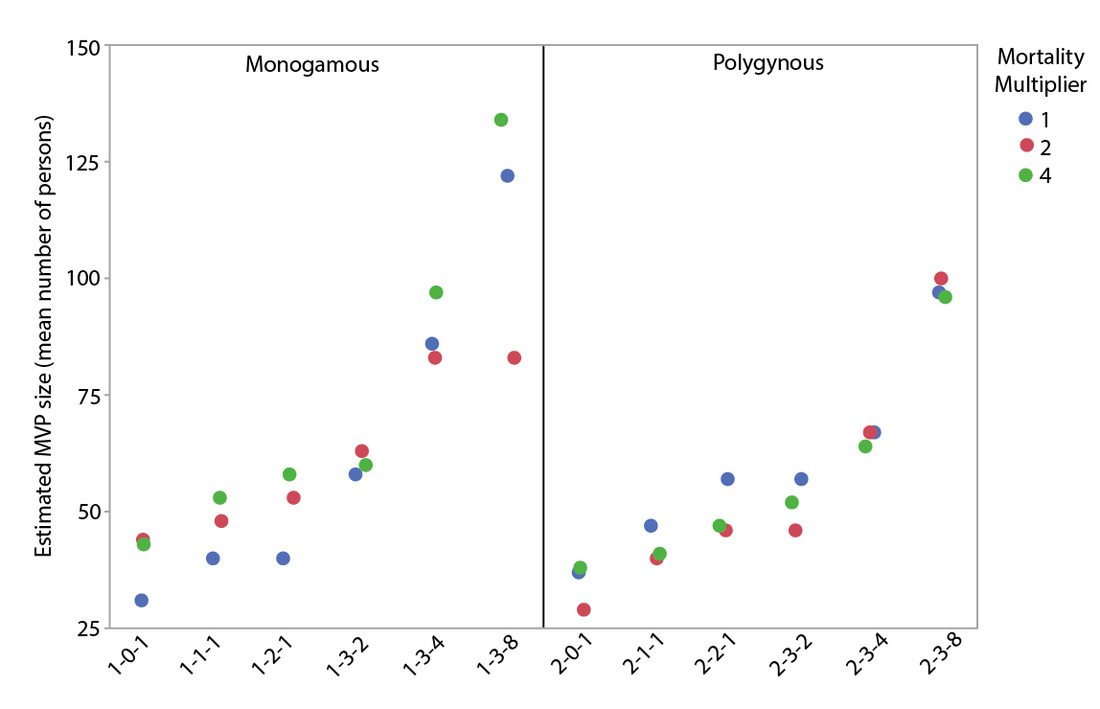
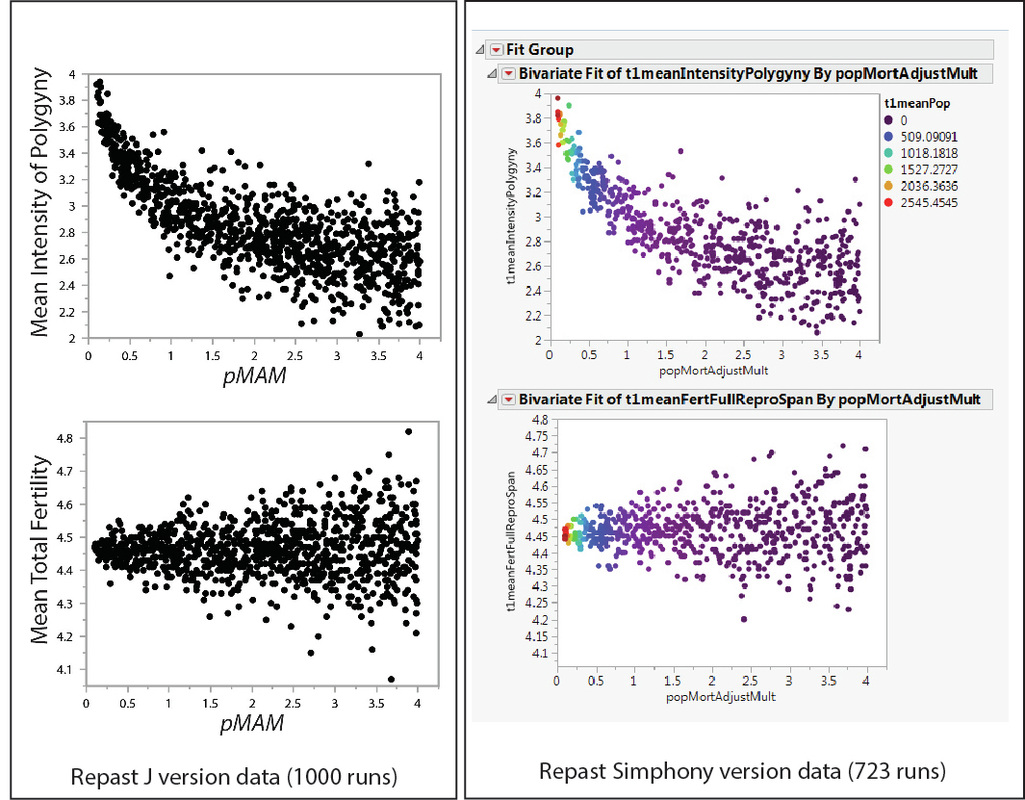


 RSS Feed
RSS Feed
